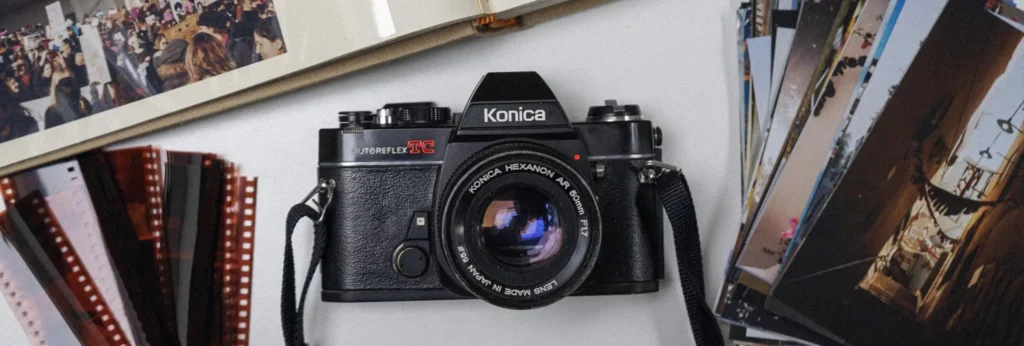
Longevity month: #RepairReuseRecycle
Let’s start this article with a quick etymological experiment representing a timelapse of the goings-on in the electronics industry. We’re going to fixate on a word and repeat it so many times that it’s meaning becomes somewhat distorted: „Innovation. Innovation. Innovation. InnovationInnovationinnovation„.
Each cycle of repetition waters down the core principles behind this term. And we’ve done it so much in the last half-century that it has morphed into an acceptable synonym for the word „novelty,“ – Especially in the electronics industry. Consequently, if innovation (or novelty) is now an unquestioned good, a necessity for growth and prosperity, has it finally become the antagonist to longevity? „Out with the old, in with the new“ sounds like a pretty straightforward concept – until you start to contemplate where exactly „out“ is supposed to be and what it takes to create the new replacement.
There is no such thing as ‚away.‘ When we throw anything away, it must go somewhere.“- Annie Leonard in ‚The story of stuff‚
A system that’s designed to replace rather than repair has far-reaching implications. The production of e-waste is projected to grow to more than 50 million metric tonnes annually by 2021. That’s the equivalent of 4000 stacked Empire State Buildings. Let that sink in for a minute…
The fourth „R“
The connection between these skyscrapers of discarded electronics and the make-use-dispose mentality is relatively straightforward. While we’re all pretty familiar with the three ‚R’s‘ – reduce, reuse, recycle. However, many of us, including many product designers and manufacturers, willingly ignore the fourth ‚R.‘ And no, it’s not ‚replace’…
Aiming for longer-lasting over latest really makes a difference
While ‚replacing‘ fits the bill of the rapid succession of innovations, the fourth ‚R‘ actually used to be the norm. ‚Repair ‚hasn’t always been this neglected. Repairing keeps the things that we love going, it saves us money in the process, it provides jobs, and best of all, it throws a monkey wrench into the current system of short lifecycles. So, it’s time to replace ‚replace‘ with ‚repair.‘ If our products were designed to last, to be repaired, more of us would take the time to fix what we own. The act of repairing opens up the stories behind our products, helping us understand their design trade-offs and footprints. And once you’ve had this experience yourself, you might even start to apply the method elsewhere. There is a chance that afterward, you won’t take the world for what it is anymore. In a way, you’ve learned to open up the box. And from then on, you’ll want to know more about what’s inside.
The path towards change
To do our part, we started by making a phone. We uncover production systems, solve problems, and use transparency to invite debate about what’s truly fair. Our expanding platform gives a voice to people who care about social and environmental values. Smartphones give us avenues into so many different, interconnected issues – They give us a path towards change. The more people follow this path, the more real the destination becomes. What’s exciting is that we’re only at the beginning of our journey, and we can all watch this slow but steady migration towards a fairer future happen in real-time.
Zooming in to an individual level, though, I’m interested in the motivation behind every traveler. What makes us set out on this journey in the first place?
More often than not, it starts with something that we’re just not ready to let go of, something old that we love. That one jacket that kept you warm on all those summits over the years. Your dad’s old bicycle that still runs like a charm or your family’s first record player, maybe? It’s these heirlooms or multi-generational hand-me-downs, storied and rich with heritage, that inspire us to go the extra mile to keep them going. For me, it was my granddad’s Konica film camera. Every mechanical click of the shutter-release reminds me of its 50 years of heritage. It’s worth every bit of effort to maintain it.
So, while November is usually geared towards ramping up consumerism with a deals-race to the bottom, we would like to celebrate what we already own. Join us in putting longevity front and center this month by sharing an image of your old and cherished items and the story behind them. Remember to tag us on Instagram using @fairphone and the hashtag #RepairReuseRecycle.
And for those of you who are looking to take action straight away, you can check out our repair-playlist on Youtube, find the right spare-part in our online-shop or help us reach our goal of recycling 20.000 phones in 2020, by sending in your discarded old phone(s) to our take-back program >>
Share this post
The post you are currently reading is an AMP HTML document; an optimized version for mobile usage to increase loading speed and decrease data usage. To see our full website you can visit our own mobile version of this post.